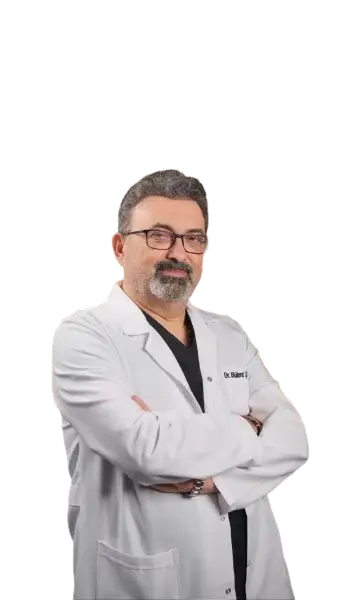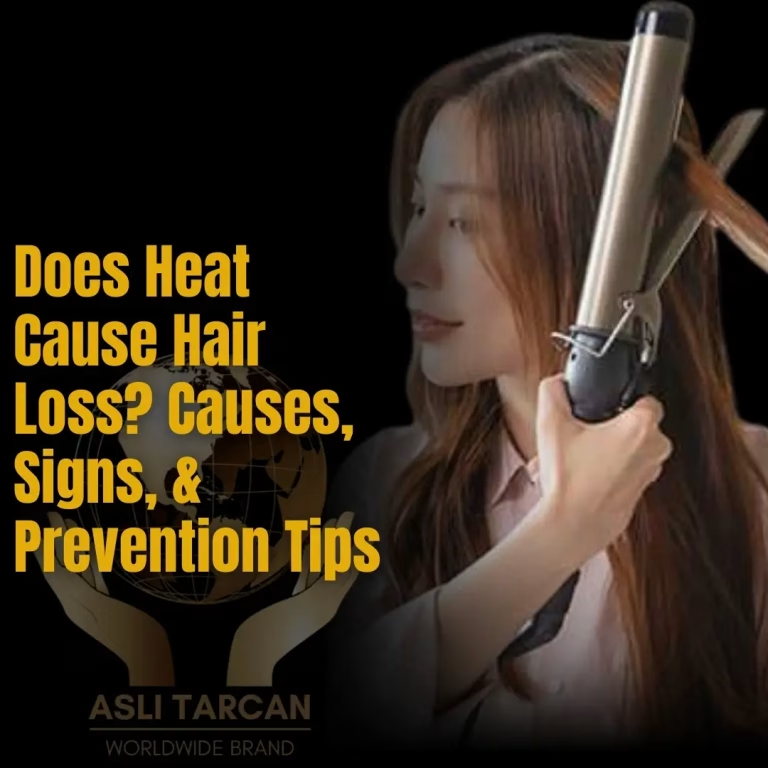Best Trichotillomania Hair Regrowth Tips for Women
Do you have a habit of pulling your hair during stressful situations? You might be dealing with trichotillomania, a chronic mental health condition that causes major hair loss.
This condition is uncommon and generally affects women at a young age. With proper care, you can manage it and restore your hair growth. The most effective tips for trichotillomania hair growth involve consistent hair care, stress management strategies, along with behavioural therapies.
This article covers main points about trichotillomania hair regrowth, including causes, signs and practical strategies to help restore your hair’s health naturally.
What is Trichotillomania?

Trichotillomania is a mental health condition that causes a person to pull out their own hair. It is also known as hair pulling disorder, trich or TTM. While many patients focus on their scalp’s hair but it can also affect other areas including:
- Eyebrow
- Eyelashes
- Beard
Pulling hair can result in:
- Patchy bald spots
- Short broken hair
- Thinning or uneven hair
- Scarring in rare cases
What Causes Trichotillomania?

Trichotillomania has multiple causes and triggering factors. It often co-occurs with psychological disorders like anxiety disorders and depression.
Some common triggers include:
- Genetic Factors: More common among family members.
- Environmental Factors: Low social conditions can trigger it, especially under stress.
- Hormonal Factors: It often affects women during menstruation and pregnancy.
Note:- Most people develop trichotillomania between 10 and 13 years of age as a coping mechanism for stress and anxiety.
Signs of Trichotillomania
The main signs of trichotillomania include:
- Repetitive hair pulling
- A sense of relief after hair pulling
- Eating your own hair
- Broken strands of hair on the scalp
This condition can lead to skin infections, itching and a burning sensation on the scalp due to forceful hair pulling.
Does Hair Grow Back After Trichotillomania?

Yes, hair can regrow after trichotillomania once the scalp heals. This depends on several factors including:
| Factor | Regrowth Impact | Recovery |
| Duration Of Pulling | Longer pulling = more damage | Good if less than 1 year |
| Pulling Frequency | Daily pulling causes more trauma | Excellent if occasional |
| Scalp Scarring | Scar tissue blocks follicles | Limited if extensive scarring |
| Age | Younger follicles recover faster | Best in children and teens |
| Overall Health | Nutrition/hormones affect growth | Good with proper support |
Trichotillomania Tips For Hair Regrowth

If you realize that you are losing hair due to trichotillomania, follow these healthy strategies to encourage hair growth:
Consult Your Doctor
The first step is to visit your doctor for your hair loss. They will check the health of your hair follicles and suggest hair growth treatment.
Your doctor can help you by:
- Assessing the follicle damage and regrowth potential.
- Prescribing stronger treatments.
- Ruling out other causes of hair loss.
- Providing realistic timeline expectations.
- Monitor progress and adjust treatments.
Follow A Consistent Hair Care Routine
You need a proper routine that focuses on scalp health. It can include:
- Weekly Massage: Gently massage your scalp for two to three minutes. This enhances blood circulation.
- Hair Wash: Use sulphate-free shampoos for hair wash.
- Drying: Gently pat your hair dry with a towel, do not rub it harshly.
- Styling: Air dry your hair when possible and use heat protection if necessary.
- Avoid: Avoid excessive brushing and chemical hair treatments during healing.
See Also: Does Heat Cause Hair Loss?
Best Hair Care Products For Trichotillomania
Some of the best hair care products that you can use include:
| Product | Recommendations | Benefits |
| Growth Shampoo | Nioxin System 1, Pura D’Or Anti-Thinning | Cleanses without stripping, DHT blocking |
| Leave-In Treatment | Rogaine Women’s Foam, The Ordinary Peptide Serum | Proven growth stimulation |
| Scalp Serum | Viviscal Elixir, Nutrafol Root Purifier | Targeted follicle support |
| Gentle Conditioner | Olapex and Kerastase | Strengthens fragile regrowth |
Use Natural Remedies And Oil
Natural remedies can support hair growth with medical treatments. Massaging your scalp with oil weekly is beneficial. You can also prepare some homemade masks for hair health. It is better to perform a patch test before to avoid irritation.
- Egg Mask: Use an egg hair mask for hair strength.
- Honey Treatment: Add honey in your masks due to its antimicrobial properties.
- Castor Oil Massage: Weekly massage your scalp properly.
Some other natural approaches you can use include:
| Natural Remedy | Application Method | Benefits | Frequency |
| Rosemary Oil | 5 drops + carrier oil, massage gently | Improves circulation, proven growth stimulation | 2-3x weekly |
| Peppermint Oil | 3 drops + jojoba oil | Increases blood flow, cooling sensation | 2x weekly |
| Aloe Vera Gel | Apply directly to irritated areas | Reduces inflammation, soothes scalp | Daily as needed |
| Green Tea Rinse | Cool brewed tea as final rinse | Antioxidants that promote a healthy scalp environment | After each wash |
Adopt Stress Relieving Habits
Since stress is a major triggering factor for trichotillomania, managing it is important. Some techniques to minimize stress include:
Immediate Management
- You can use fidget toys and stress balls to distract your mind.
- Perform deep breathing exercises for a few minutes.
- Splash cold water on hands and face.
- Start doing physical exercise or body stretching.
Long-Term Practices For Stress Reduction
- Add yoga and meditation in your schedule.
- Keep a journal and write down your triggers.
- Take a good seven to nine hour sleep.
- Engage in creative activities like art or music.
Take Balanced Diet And Supplements
A balanced diet has an important role in nourishing hair and scalp. Add supplements to your routine after consulting with your doctor. Some major nutrients and their sources include:
| Nutrient | Daily Requirement | Food Sources | Supplement Form |
| Iron | 18mg (menstruating women) | Red meat, spinach, lentils | Ferrous sulphate (325mg) |
| Biotin | 2500-5000mcg | Eggs, seeds and nuts | Biotin capsules |
| Zinc | 8mg (women) | Beef and pumpkin seeds | Zinc gluconate (15mg) |
| Vitamin D | 1000-2000 IU | Fish and egg yolk | D3 supplements |
| Protein | 0.8g per kg body weight | Lean meats, beans, quinoa | Protein powder if needed |
Note:- Always consult with your doctor before starting any supplements, especially for high doses of biotin. It can interfere with certain lab tests.
Protective Hair Styles
You should make loose hairstyles that do not irritate the scalp. Avoid tight hairstyles because they can cause strain on affected areas. Apply aloe vera gel to reduce the burning feeling in some areas.
Growth-Promoting Styles
- Loose braids that don’t stress follicles.
- Side parts to disguise thinning areas.
- Protective updos for nighttime.
- Headbands to keep hands away from hair.
Styles to Avoid
- Tight ponytails or buns.
- Extensions (until pulling is controlled).
- Styles requiring excessive manipulation.
- Center parts that highlight thinning.
Try Behavioural Therapy
These therapies focus on your behaviour and emotional challenges and provide you a supportive environment to discuss your condition. Some famous techniques include:
Habit Reversal Training – The Main Helper
In this therapy, you learn to spot when you are about to pull and quickly engage yourself in some other activity. It involves the fist clench technique in which you clench your fist for thirty seconds to avoid pulling.
Cognitive Therapy – Fixing Your Thinking
This therapy focuses more on your thinking and behaviour. You learn to identify negative thoughts and harmful behaviours.
Join Support Groups
You can also join support groups and meet people with the same challenges. These groups provide you emotional support and help to manage the condition.
See Also: How to Increase Blood Flow to the Scalp
Trichotillomania Medical Treatment

Sometimes medical treatment is necessary for trichotillomania hair regrowth. Doctors prescribe you minoxidil for treatment and can even suggest hair transplantation.
| Treatment | Mechanism | Success Rate | Timeline |
| Minoxidil | Can improve blood circulation and elongate the phases of hair growth cycle | 85-90% | 3-4 months |
| PRP Injections | Platelet-rich plasma stimulates follicles | 80% | 2-3 months |
| Microneedling | Creates micro-wounds to trigger healing | 70% combined with minoxidil | 6-8 weeks |
| Low-Level Laser Therapy | Stimulates cellular activity | 65% | 4-6 months |
See Also: Stemoxydine Vs Minoxidil

This article is medically reviewed by Head Physician & Aesthetic Dr. Bulent
See Our Doctors & Surgeons
How to regrow hair after trichotillomania?
You can stop pulling your hair. Follow a good hair care routine and massage your scalp weekly. Take a balanced diet and adopt stress managing strategies.
Does hair grow back after hair pulling disorder?
Yes, hair grows back in most cases after pulling stops. Hair takes 2 to 3 months to regrow completely.
What are the best oils for trichotillomania hair loss?
You can massage your scalp weekly with rosemary or peppermint oil for trichotillomania hair loss.
Can therapy stop trichotillomania?
Yes, behavioural therapies like habit reversal training and cognitive behavioural therapy can reduce hair pulling in many cases.
How to stop the hair pulling habit?
You can start by keeping short nails and wearing gloves during high risk times. You can use fidget toys and take behavioural therapy for long term treatment.
What factors trigger trichotillomania?
Some factors that aggravate trichotillomania can include stress and psychological factors, anxiety and boredom. Emotions and visuals can also trigger trichotillomania in some people.
How to hide your bald spots from trichotillomania?
You can use wigs, scarves and headbands. You can also use hair fibers, root touch-up sprays and volumizing hair care products for some parts.






